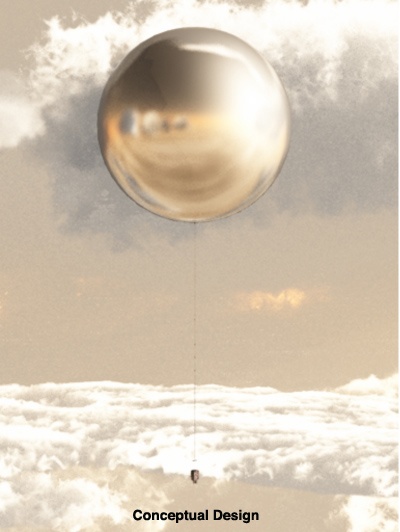Seismology has been ubiquitous on Earth for decades, and missions such as InSight have recently provided the same data for the inside of Mars. Understanding a planet’s inner workings is key to understanding its geology and climate. However, the inner workings of Venus, arguably our closest sister planet, have remained a mystery. The sulfuric acid cloud and scorching surface temperatures probably don’t help. But Siddharth Krishnamoorthy from NASA’s Jet Propulsion Laboratory and Daniel Bowman of Sandia National Laboratory think they have a solution – use seismometers hanging from balloons.
As we reported previously, the idea has been around for a while. However, it might seem counter-intuitive – don’t seismometers usually have to sit on the ground to detect something? Typical seismometers do, yes. However, another type of seismometer is only now becoming more accepted. An infrasound seismometer monitors infrasound pressure waves created by seismic activity transmitted through a medium other than the ground – like an atmosphere.
Venus has plenty of atmosphere to go around, so it sounds like an ideal place to use the technology. Even better, high up in its cloud layer is one of the places in the solar system most like the environment on Earth hence why there have been plenty of ideas to form “cloud cities” on Venus.

Credit – NASA / JPL-Caltech
It’s unnecessary to build an entire city simply to host some sensors collecting infrasound data, so a high-altitude balloon would serve the purpose nicely. That solves one of the most difficult challenges of exploring Venus – developing materials that can survive on its surface. NASA has spent millions of dollars developing radiation-hardened sensors that can withstand the extraordinary pressure and temperatures on the surface. But even they are relatively simplistic, so a sensor held aloft at a reasonable temperature and pressure wouldn’t require any additional development efforts for that specific use case.
This begs the obvious question – how will the signal get from the ground to the sensors floating in the atmosphere? Earthquakes (or venusquakes, as in this case) cause deafening sounds, which are then transmitted through the atmosphere at low frequencies. Sensitive microphones, like the ones aloft in the balloon, could read these signals.
Such an experiment was recently carried out on Earth, where an infrasound microphone could pick up signals from two earthquakes of magnitude 7.3 and 7.5, despite being 3,000 km away from the epicenter of the earthquakes up in the stratosphere. Using this experiment as a template, researchers could develop a similar system for use on Venus, with the associated changes necessary for that particular planet’s environment. Also, it was much farther away than previous experiments done with infrasound seimometers, and much closer to the actual distance any such sensor would be in from the epicenter of a venusquake.
There are still plenty of challenges, though. One is that we haven’t been able to successfully launch a balloon mission to Venus at all, let alone one with sensitive seismometers on it. Second is that, in the case of the Earth experiment, we had a “ground truth,” i.e., the researchers knew from other sources there was an earthquake happening when they received the signal. Since there are no other sensors capable of providing that validation on Venus, researchers would likely have to speculate on what caused a particular pattern in the data – it could be a venusquake, or maybe the balloon was jostled in a certain way.
In addition, earthquakes with magnitudes above seven are considered large here on Earth, and it’s unclear if the seismometers could pick up smaller quakes, even here on our home planet. Venus might have the same range of resultant seismic activity, or it could be even more active but with less intensity, making the detection of less powerful quakes a priority. The JPL team has picked up aftershocks as low as magnitude 4.2, however the balloon as that point was much closer than a few thousand kilometers away.
Utilizing technologies developed on Earth in space exploration is always a good idea, and this seems to be a novel way of using these seismometers in a novel way. However, as of now, there are no plans for a mission utilizing these features, despite almost a dozen planned missions to Venus in the near future. For now, understanding the interior workings of our nearest sister planet will have to wait.
Learn More:
Krishnamoorthy & Bowman – A “Floatilla” of Airborne Seismometers for Venus
UT – Balloon Mission May Also Work to Detect Quakes on Venus
UT – The Best Way to Learn About Venus Could Be With a Fleet of Balloons
UT – Venus is Like an Exoplanet that’s Right Next Door
Lead Image:
Artist’s depiction of a series of balloons on Venus.
Credit – NASA
The post Floating Seismometers Could Help Peer Into The Core of Venus appeared first on Universe Today.
No comments:
Post a Comment